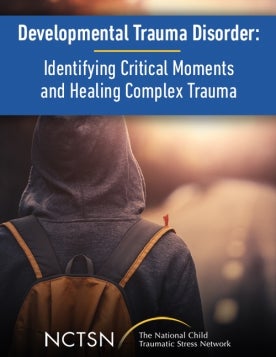
Two Mothers, One Daughter, and an Intergenerational History of Developmental Trauma
Focuses on meet Penny and her adopted mother, Jan, who are in an emergency session with Dr. Ford. Penny was sent home from school for assaulting another child.
The following resources on child trauma were developed by the NCTSN. To find a specific topic or resource, enter keywords in the search box, or filter by resource type, trauma type, language, or audience.

Focuses on meet Penny and her adopted mother, Jan, who are in an emergency session with Dr. Ford. Penny was sent home from school for assaulting another child.
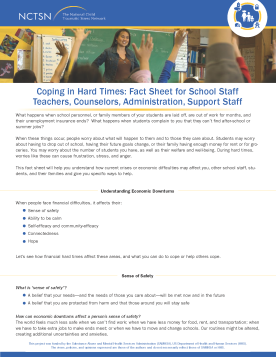
Discusses how challenging financial circumstances may affect you, other school staff, students, and their families and provides specific ways to help.
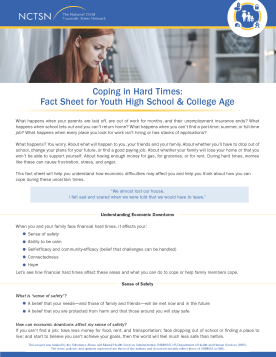
Helps high school students and young adults understand how economic difficulties may affect them and provides suggestions on how they can cope during these uncertain times.
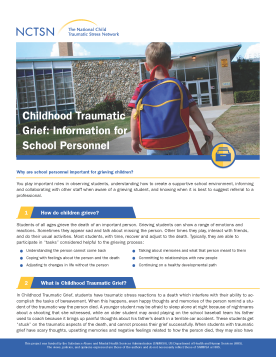
Offers information on why school personnel are important for grieving students. This fact sheet outlines how children grieve, what Childhood Traumatic Grief is, who develops Childhood Traumatic Grief, what traumatic stress reactions in Childhood Traumatic Grief can look like, the signs a student
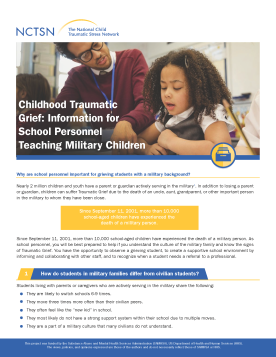
Offers information on why school personnel are important for grieving students with a military background. This fact sheet outlines how students in military families differ from civilian students, how students grieve, what Childhood Traumatic Grief is, who develops Childhood Traumatic Grief, what
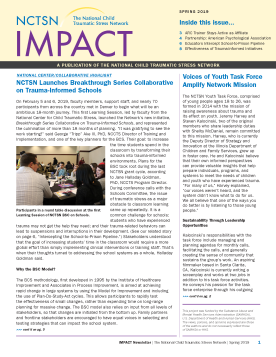
Has a special focus on schools. This edition of the newsletter includes a look at the Breakthrough Series Collaborative on Trauma-Informed Schools.
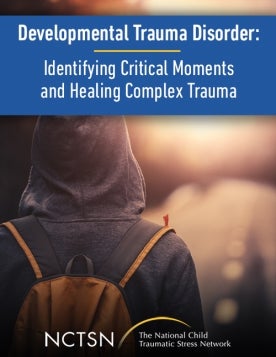
Presents Joshua, whose mom abandoned him when he was a few days old. For the first three years of his life, Joshua lived with his maternal grandmother and her partner. When Joshua began preschool, his teachers had some concerns about his overall hygiene and care.

Brings to life the story of Rosie, a young girl who is struggling after the death of her mother. This video walks you through Rosie's story and illustrates how a parent can provide solace and support to a child after the death of a loved one.
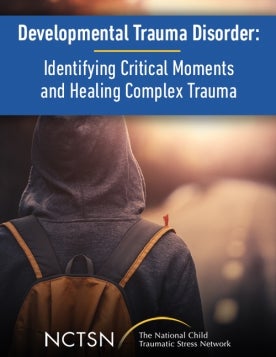
Presents Adam, a 15-year-old Caucasian male who grew up in the suburbs outside of Chicago with his mother, father, and two sisters. His family is pretty well off financially and he and his siblings all attend private school, have personal tutors, and enjoy horseback riding and soccer.

Depicts a moment when Rose initially directs her feeling of being victimized toward her therapist. Rose expresses that therapist’s contact with her mother and school has increased the stigma and vulnerability she feels, and her sense that she’s not getting the support she needs.
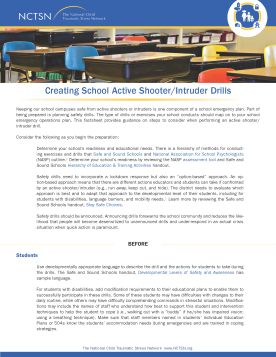
Provides information to schools about how to create a trauma-informed active shooter/intruder drill. This fact sheet outlines the steps to take before, during, and after for students, school staff, and parents.
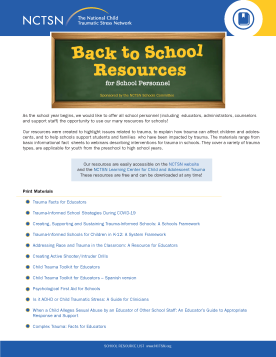
is a list of NCTSN products that are useful for school staff and personnel.